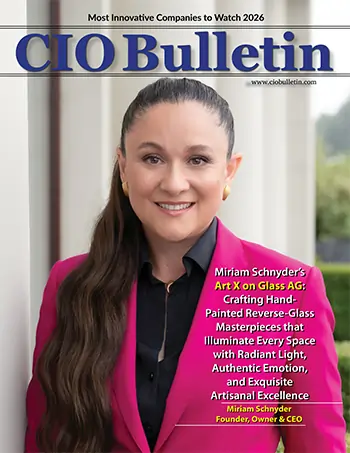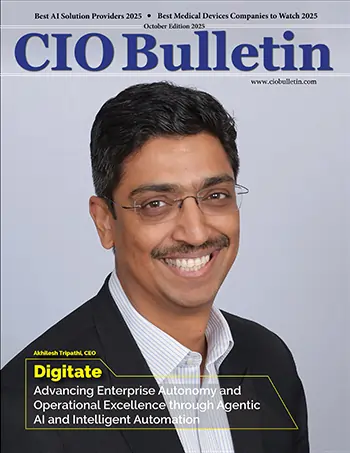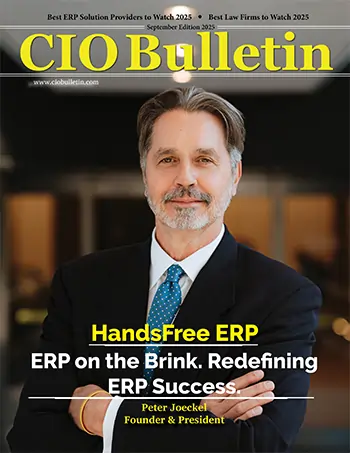50 Most Innovative Companies to Watch 2021
CIO Bulletin

Regenerative medicine has the potential to heal or replace tissues and organs that are damaged due to age, disease, or trauma, as well as normalize congenital defects. It is the only technique that experiments through methods such as therapeutic stem cells – to regrow, repair or replace damaged cells. However, the industrialization of Regenerative Medicine is now stacking up due to the inherent failure in producing large-scale cultures for stem cells in the world. Two major problems occur during hand-made production for stem cell – expensive and limited cell production. As a specialist and doctor of Regenerative Medicine, Shunmei Chiba, MD, PhD, Founder and CEO of FullStem realized that practical and appropriate large-scale production of stem cells for clinical use is necessary to expand the advanced therapy for safety use like common drugs.
FullStem was established to focus on the automated large-scale culture system using non-woven fabrics for maximization of the number and keeping the potential of stem cells at the same time. The system could soon be the de-facto standard of cell producing method for clinical use. Recently, the firm focused on collaboration using clinical therapy to prove the techniques to be therapeutic-grade and safe.
We interviewed Shunmei Chiba, President and CEO, to get a clear idea on how FullStem works
Q. What are stem cells and why do we hear so much about them?
Stem cells are known to have two major characteristics, one is self-newing, which is the ability to proliferate by themselves for long time, and the other is multipotency, through which stem cells can become any kind of cells in the body. Therefore, stem cells are considered to be the unlimited source for regenerative medicine. Some more specific ability of stem cells, such as secreting cytokines and exosomes, are commonly expected to be a new therapy for many serious diseases and injuries.
Q. How does stem cell technology work? What diseases can be cured by stem cells?
Two types of therapy using stem cells are popular. One is cell replacement therapy, which is when the differentiated cells from stem cells are transplanted into the patient to replace the damaged cells. This therapy can be used to treat Parkinson’s disease, Alzheimer’s disease, and diabetes. The other is administration of naïve mesenchymal stem cells to bring about a regenerative effect by secreting exosomes and cytokines from cells. This therapy does not have a limited application and isn’t for specific diseases, because its effect can support, induce and/or enhance self-repair of damaged tissue via simple IV injection.
Q. What is the vision of FullStem Co. Ltd?
Our aim is to support the propagation of Regenerative Medicine through our next-gen cell production platform technology for everyone, anywhere in the world.
Q. How is your next-gen stem cell mass culture platform technology a revolution?
To obtain the maximum attachment area for large-scale cultures, fabrics are likely to be regarded as useful for scaffolds. While it is extremely difficult to recover cultured cells on 3D fabrics to produce vaccines and antibodies for a long time, our system can gently and efficiently recover the cells from fabrics. This simple up-down process has maximized the superiority of the usage of fabrics. It can defeat hand-made production and the others for the size and cell volume with keeping the potential of stem cell by eliminating the sheer stress. It can also enable the production of large number of cells even in small clinics.
Q. Describe the functioning of Achieva-CS kit for adipose stem cells.
Achieva-CS is an automated large-scale and high-density culture system for stem cells that uses non-woven fabrics as a 3D scaffold. The single and double bottle system contains appropriate number of fabrics generated from 10^7 to 2x10^9 of mesenchymal stem cells. Because of the unique culture system based on the simple up-down motion of the table under fabrics inside the closed system that has controlled air in the 1L bottles, it regulates exchanging gas and mixing medium efficiently. The smallest size (W55cm x D43cm x H73cm) of the device can be kept inside a biosafety cabinet.
The system also has Wi-Fi operation and monitoring support system and is useful for beginner users. Achieva-CS can produce not only over 10^9 mesenchymal stem cells easily without loss of their potential, but also produces two times higher exosomes than conventional 2D cultures.
Q. How can Achieva-CS change the future of regenerative medicine?
As you know, our system fits the environment, and we also have the insights into increasing exosomes produced from adipose-derived mesenchymal stem cells. The combination of the system and the factors rising up exosomes generated over 80 times higher number of the production compare to the physiologically limitation by conventional 2D culture method by hands. Therefore, we would like to contribute to receive the advanced therapy for more patient in the small clinic in the world.
Q. Where do you envision the company in the forthcoming years?
The regenerative medicine market is expected to reach 550 billion yen in Japan and 12 trillion yen overseas by 2030. We want to be the de-facto standard of cell production as a platform infrastructure to support that market. Our business model is to sell culture kits with equipment and provide support for small clinics. In addition, our treatment is based on the law called “Act on Securing Safety of Regenerative Medicine” enacted 2013 in Japan. Once it is started and demonstrated under the law, the use of this technique will increase more and more because the application will be accepted without any problem. In the future, we plan to expand our business mainly in East Asia with consumables as the main focus. After that, we would like to deploy our systems around the world through verification based on the data from remote support.
A brief about the President and CEO
As a young neurosurgeon, Shunmei Chiba aspired to improve the defect and disability, which came about in the patients after an episode of brain stroke. He felt that neurosurgical treatment could prevent re-attack and stabilize the patient, but he also realized that the damaged cells cannot recover even after the treatment. Hence, he began to focus on his research work, which was based on regenerative medicine to explore more. He established FullStem as an extension of his research and ambition, to improve the quality of lives of the patients.







